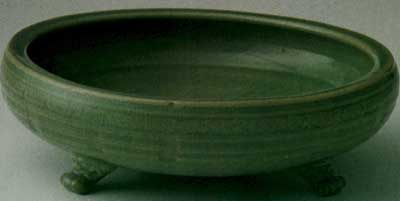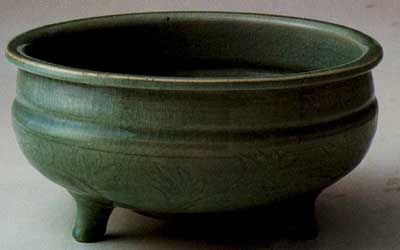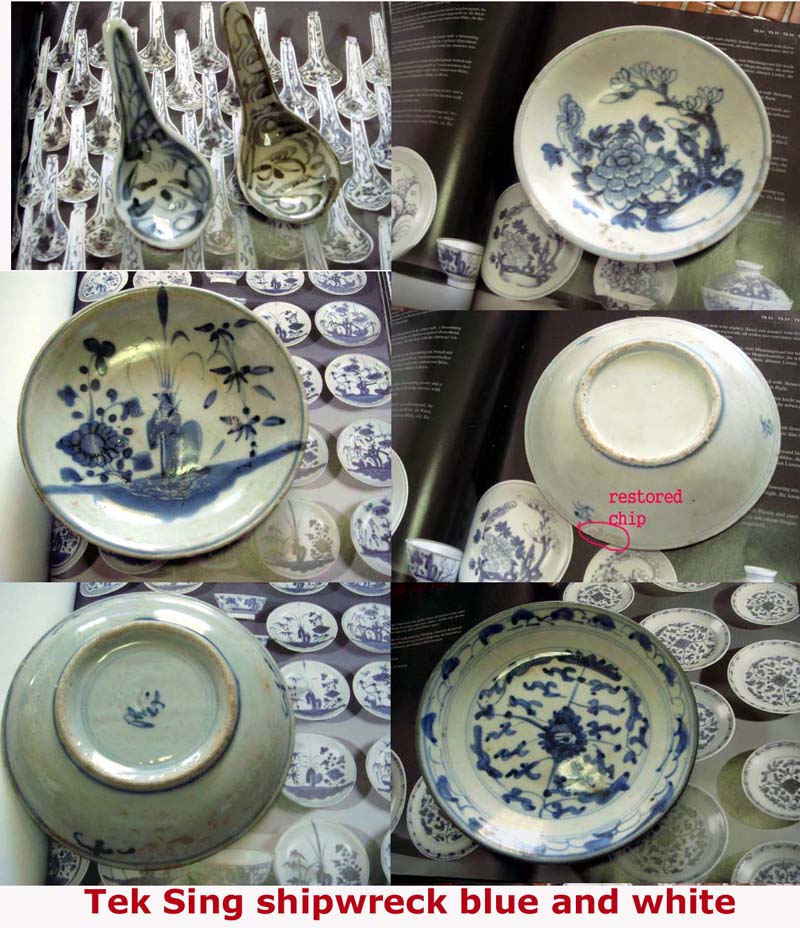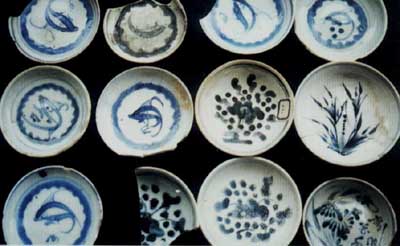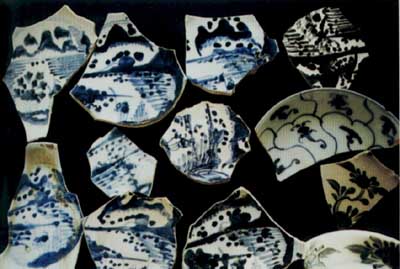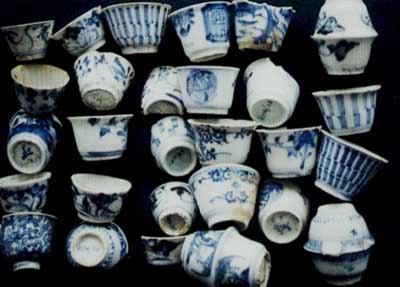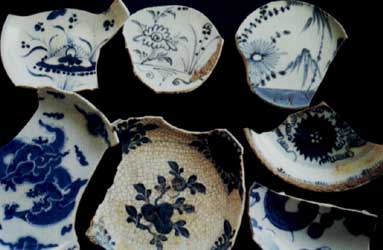|
The Wreck This time he has discovered the sunken remains
of Tek Sing ("True Star"), an unusually large junk measuring approximately
50 meters long and 10 meters wide and weighs around 1000 tons.
Tek Sing set sail from Xiamen (Fujian Province) in Jan 1822 (one year into
the reign of Qing Daoguang emperor) and headed for Java. It had more
than 200 crew members and at least 1600 passengers, majority of whom were
emigrants looking for work in sugar cane fields in Java. The fateful
disaster ocurred in Feb 1822. Tek Sing hit a reef in
the South China Sea, two degrees south of the equator, north of Java, east
of Sumatra and south of Singapore. Only 198 people survived the tragic
disaster. They were saved by a Captain Pearl, an ex-navy captain,
who passed by the place with his ship "Indiana" two days later.
Ceramics finds Captain Hatcher's crew discovered the wreck on
12 May 1999. Among the salvaged cargo were more than 350,000 pieces
of Chinese porcelain, most of them in good condition. Many pieces
are simple plates, soup bowls, cups, and condiment dishes meant for
everyday use. Other items recovered were
mercury, sextants, pocket watches, Chinese ink pads, iron and brass cannon,
one bronze cannon, boxes with needles, pocket knives, Chinese brass padlocks,
candlesticks, incense burners, telescope parts, coins.
The Ming Celadon Puzzle Most of the porcelains are blue-white porcelain from early 19th century, manufactured in Dehua kilns in Fujian Province. Among he intriguing finds include Longquan celadon wares attributed to Mid Ming Dyansty (similar to those shown below). How did porcelain wares dated to at least 16th century ended on with a cargo of 19th century blue and white porcelain? The age difference is more than 300 years. This is indeed puzzling. It may raise question on current dating of Ming Longquan wares. (After Note
on 13 Oct 2000: Captain Hatcher gave a talk in Singapore Asian Civilisation
Museum on 3 Oct 2000 in conjunction with the preview on the Tek Sing Auction
in Nov 2000. During the talk, he mentioned that those longquan items
were discovered above the cargo. In addition, in view of the small
number of such items, it is widely believed that they were the personal
belongings of the passengers. The items were probably antique brought
along by passengers migrating to Batavia).
Dehua Blue and White Dehua is an important export ceramics production centre since Song Dynasty. However, it is much associated with the famous ivory white blanc de chine wares that many people do not know that it also produce huge quantities of blue and white. According to archeological finds, it started production of blue and white since late Ming Period. However, blue and white ceramics produced were very small compared with the blanc de chine wares which were highly demanded. However, during the early Qing period from 18th/19th century, blue and white became the main production. So far, more than 200 kiln sites have been discovered. This reflected the large size of the production.
The early blue and white were much influence by the Jingdezhen product. However, by early Qing Period, Dehua blue and white were distinctly different from Jingdezen and there were wide ranging varieties of designs. The blue and white ceramics from the Tek Sing cargo clearly reflected its distinctive characteristics. Seasoned collectors is unlikely to confuse them with the Jingdezhen type. To find out more on Tek Sing blue and white, please read this.
Shards from Dehua kilns Some of the sherds which were recovered from Dehua
kilnsites are shown below for reference:
More samples .................
N K Koh : 6 Aug 2000 References: 1. 德化民窑青花 (陈建中 编著) 2. Tek Sing Treasures (Nagel Auctions)
|
